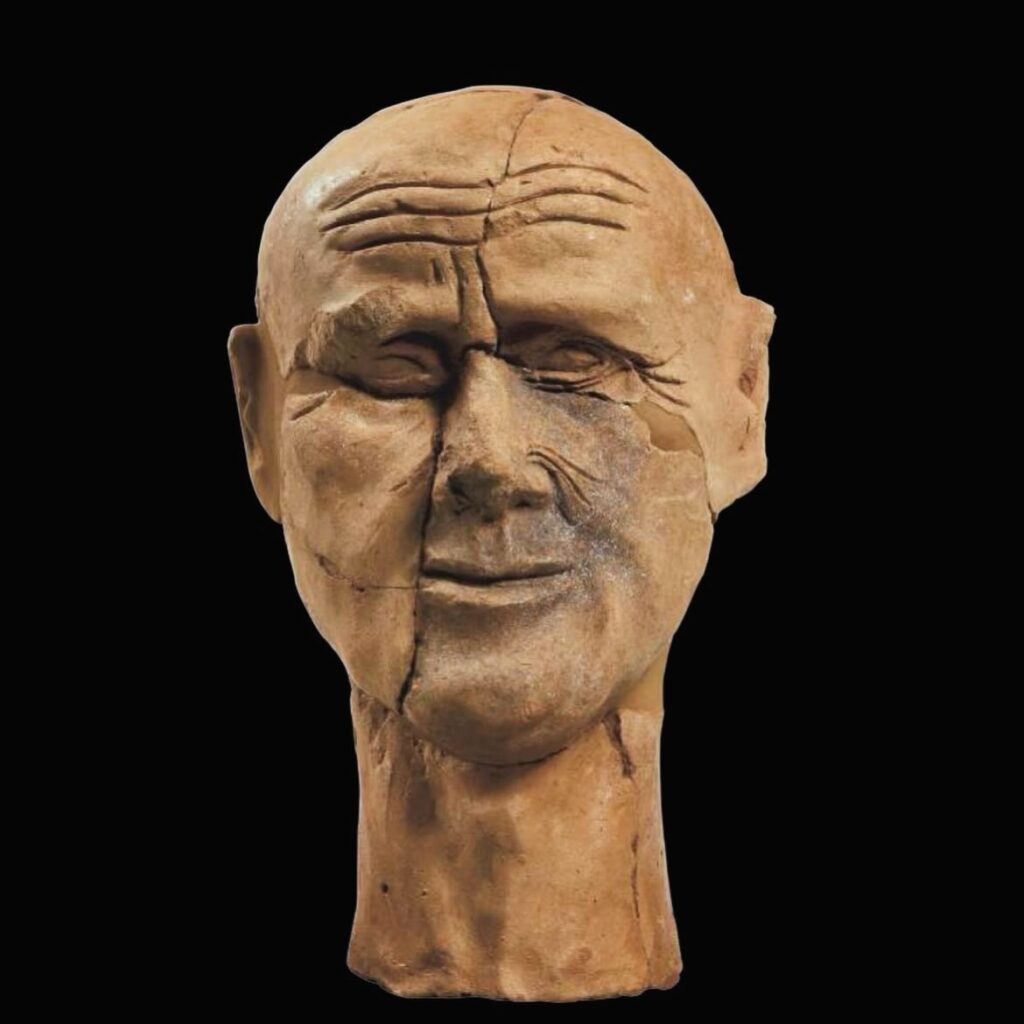You might not have seen these before and if so might be at a loss about what exactly you’re looking at….I am to some extent, and would be out to sea without some good old archaeological context.
Twenty-six life-sized smashed clay heads were found in an early 5th century B.C. tomb within the monumental necropolis of Macedonian royalty in modern Vergina (ancient Aigai). Predating the splashy gold and ivory finds of Alexander’s successors by 150 years, these peculiar heads were deposited in a woman’s tomb generally identified as the queen of Alexander I.


Shown are two male heads, one head with a reddish coating and somewhat incongruously paired smooth face and heavily creased forehead, and the other with a miserable, pinched expression. The other 24 are a mix of male and female, all without bodies, and run the gamut from sort of ugly like these fellows (you’re welcome) to highly idealized.
Because of the context, they are assumed to have specific funerary significance, but without much to go on in terms of parallels and the ritual dimension, what this significance might have been is debated. Typically the males are referred to as daimons and the women korai with the assumption they had a connection to the underworld, although some have proposed they belong to a local ancestor cult.




